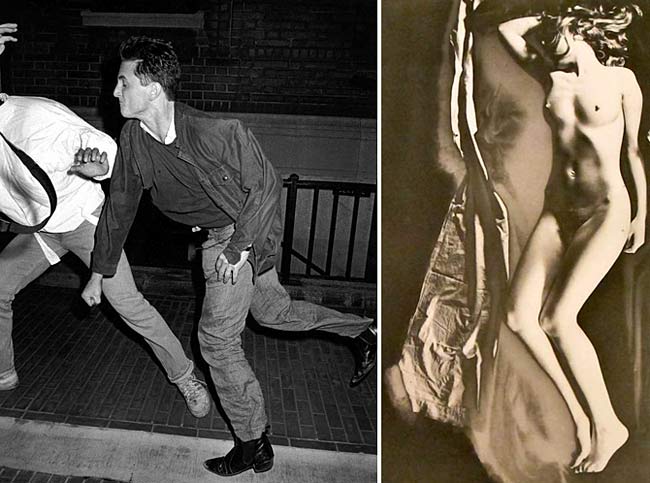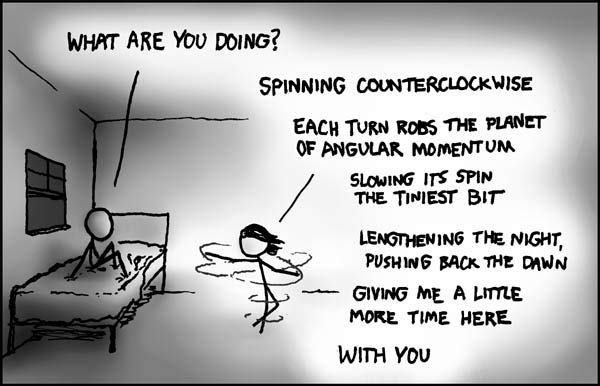visual design
Begin at the beginning and go on till you come to the end. Then stop.

The Bender Visual Motor Gestalt Test is a psychological test first developed by child neuropsychiatrist Lauretta Bender. The test is used to evaluate “visual-motor maturity”, to screen for developmental disorders, or to assess neurological function or brain damage.
The original test consists of nine figures, each on its own 3 × 5 card. The subject is shown each figure and asked to copy it onto a piece of blank paper. The test typically takes 7-10 minutes, after which the results are scored based on accuracy and other characteristics.
{ Wikipedia | Continue reading | Innovative Features of the Bender-Gestalt II and Expanded Guidelines for the Use of the Global Scoring System | PDF }
A comfort only provided by the malleability of memory that allows our loneliness to momentarily dissipate through the manipulation of what was

Healy tells the story of the launch of bipolar disorder at the end of the 1990s. A specialised journal, Bipolar Disorder, was established, along with the International Society for Bipolar Disorders and the European Bipolar Forum; conferences were inundated with papers commissioned by the industry; a swarm of publications appeared, many of them signed by important names in the psychiatric field but actually ghost-written by PR agencies. Once the medical elites were bought and sold on the new disease, armies of industry representatives descended on clinicians, to ‘educate’ them and teach them how to recognise the symptoms of bipolar disorder.
{ London Review of Books via Phil Gyford | Continue reading }
images { 1. Picasso, Sleeping woman, gray symphony, 1943 | Gagosian Gallery, until December 23, 2010 | 2. Thomas Dworzak }
Pause, flash

{ A new look at traffic lights | more | via copyranter | Related: Control Safety Traffic Light Concept }
See this egg. It is with this that all the schools of theology and all the temples of the earth are to be overturned.

{ Mark Delong }
A black star is created when matter compresses at a rate significantly less than the freefall velocity of a hypothetical particle falling to the center of its star, because quantum processes create vacuum polarization, which creates a form of degeneracy pressure, preventing spacetime from occupying the same space at the same time

Black is the color of objects that do not emit or reflect light in any part of the visible spectrum; they absorb all such frequencies of light. Although black is sometimes described as an “achromatic” color, in practice it can be considered a color.
Black can be defined as the visual impression experienced when no visible light reaches the eye.
Pigments that absorb light rather than reflect it back to the eye “look black.” A black pigment can, however, result from a combination of several pigments that collectively absorb all colors. If appropriate proportions of three primary pigments are mixed, the result reflects so little light as to be called “black.”
This provides two superficially opposite but actually complementary descriptions of black. Black is the lack of all colors of light, or an exhaustive combination of multiple colors of pigment.
photo { Ron Jude }
‘Man is for woman a means: the purpose is always the child.’ –Nietzsche

{ 1. Laura Encursiva | 2. April Renae }
One might be seeing what the other one is seeing

{ Von Bruenchenhein’s drawing made with ballpoint pens, rulers and French curves, 1965 | Von Bruenchenhein’s hyper-productive creative existence is receiving its first in-depth museum exhibition at the American Folk Art Museum. | NY Times | full story }
The sword was odd

{ 1. Steven Brahms | 2. Robert Davies }
It’s memories that I’m stealing but you’re innocent when you dream

Real-time holographic video displays could be near
Holograms may seem like an original invention from some science fiction films. A famous scene often mentioned in this context is that from Star Wars where Princess Leia records an important holographic message, ending with the words “Help me, Obi-Wan Kenobi“.
Such visions of holograms aren’t fiction. In a paper published in Nature, Nasser Peyghambarian, Pierre-Alexandre Blanche and colleagues from the College of Optical Sciences at The University of Arizona demonstrate a holographic system that is capable of displaying holograms at speeds approaching almost that of video capability. (and sure enough, they do mention Star Wars in the abstract of the paper…)
Holograms have been invented in 1947 by Dennis Gabor. They are made by shining a laser beam on an object and then recording the laser light reflected by the object on a photographic film. Simultaneously, a reference beam of the same laser is directly guided to the photographic film, where it causes an interference of the two beams. The interference pattern stored in the photographic film not only contains information on the light intensity (as in conventional photos) but also the phase difference between the two laser beams. The phase difference is a measure of the three-dimensional shape of the object. Together, intensity and phase contain the complete information of a light beam.
photo { Ryan Bailey }
Semi suite

You write in Art is Work that the very famous “I ‘Heart’ New York” logo you designed was originally proposed as something else.
It was just a little typographical solution with two lozenges and a word in it, two ovals, and the word inside it; it was not in any way distinguished. But I always thought the whole thing was going to be a three-month campaign.
{ Interview with Milton Glaser | The Believer | Continue reading | Images: I Love NY and New York magazine logotypes designed by Milton Glaser | video: The “I Love New York” Ad Campaign Origin }
related { An Introduction to Graphic Design | Design Observers | full story }
The D’s run in my crib, I’m nowhere to be found

The kymograph was invented by Carl Ludwig in 1847.
P. van Bronswijk argues that the kymograph was the first recording device used to record and compare the influence of drug effects. Specifically, the kymograph enabled the study of the influence of drugs on a specific organ, which van Bronswijk says enabled the development of Pharmacology as an independent science in its own right.
photos { 1. Jacques André Boiffard, 1929 | 2. Paige de Ponte }
Ladylike in exquisite contrast

In her new documentary, Picture Me, Columbia University student Sara Ziff chronicles her 4-year rise and exit through the fashion modeling industry, zooming her personal camcorder onto supposedly systemic abuses—sexual, economic, and emotional—suffered by fashion models. Among the many complaints launched in the film is an aesthetic that prizes uniformly young, white, and extremely thin bodies measuring 34-24-34” (bust-waist-hips) and at least 5’10” in height. It’s an aesthetic that many of the models themselves have a tough time embodying, pushing some into drastic diets of juice-soaked cotton balls, cocaine use, and bulimia—in my own interviews with models I discovered similar, but not very common, practices of Adderall and laxative abuse.
It’s also an aesthetic that has weathered a tough media storm of criticism, set off in 2005 with the anorexia-related deaths of several Latin American models, and which culminated in the 2006 ban of models in Madrid Fashion Week with excessively low Body Mass Indexes (BMI). And yet, as a cursory glance at the Spring 2011 catwalks will reveal, thin is still in.
In fact, bodies remain as gaunt, young, and pale as they did five years ago, and it’s entirely likely that in another five years models will look more or less the same as they do now.
What’s the appeal of an aesthetic so skinny it’s widely described by the lay public as revolting?
photo { Hedi Slimane }
And leave it to my hands. Try it with the glycerine.

{ Victorians commonly made jewelry using hair and teeth of the person passed in times of mourning. | Ana Finel Honigman | Continue reading }










